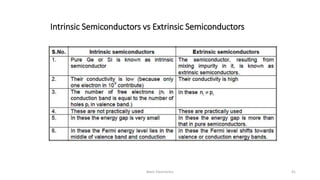This document provides an overview of the Basic Electronics course EEE-231. The key details are:
- The course is 3 credit hours with lectures, quizzes, assignments, and exams throughout the semester. Minimum 80% attendance is required to sit for the final exam.
- The course will cover fundamentals of semiconductor physics, diodes, transistors, amplifiers, and digital circuits.
- Two textbooks are required for the course. Prerequisites include knowledge of DC circuit analysis.
























































